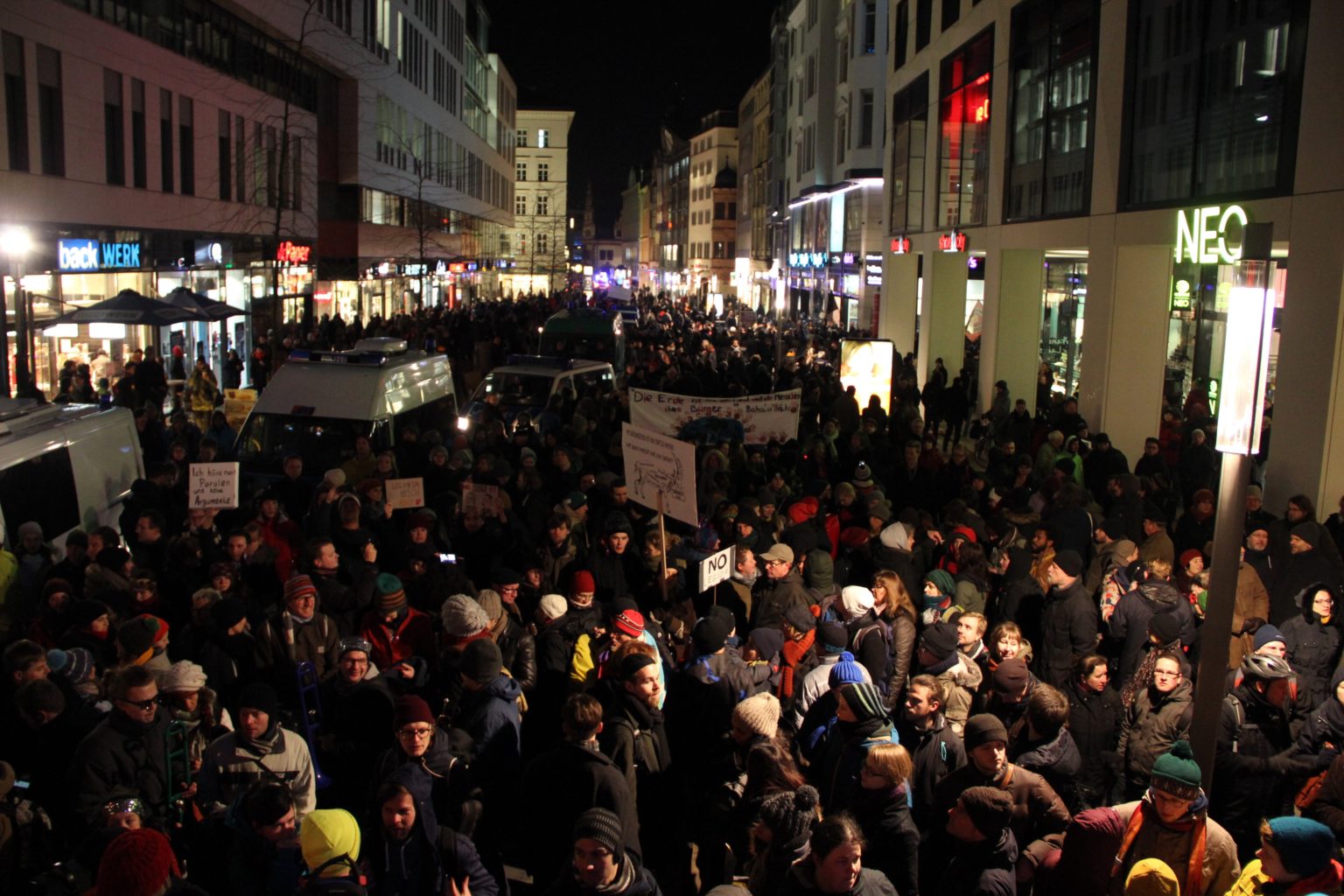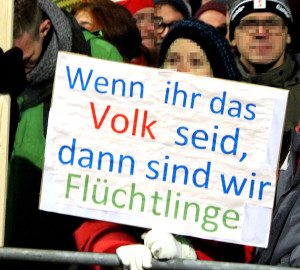Legida not welcome in Leipzig: thousands gather in counter-demonstrations to Islamophobic Pegida branch
[dropcap]O[/dropcap]ctober 9th 1989: 70,000 people marched through the streets of Leipzig chanting “Wir sind das Volk”, we are the people, and calling on the German Democratic Republic (GDR) government to hear their demands for democracy and change. This event, the high point of the Monday demonstrations that spread across Eastern Germany in autumn 1989, was one of the key events that led to the fall of the Berlin Wall exactly a month later. The city of Leipzig has been known ever since as the city that led the way in the peaceful revolution 0f 1989; one of the only peaceful revolutions in history.
Now, in 2015, another group has taken up the call “Wir sind das Volk” and is attempting to replicate the Monday demonstrations of 1989. Pegida, whose name roughly translates as ‘Patriotic Europeans against the Islamisation of the West’, began their demonstrations in Dresden in late October. The movement’s leaders and many of its participants have, in recent weeks, proven themselves to be racist and Islamophobic, despite claims to the contrary. Shortly before Christmas the numbers at their marches in Dresden began to swell massively and there were signs that Pegida might well spread to other German cities. On Monday 12th January, Legida, Leipzig’s answer to Pegida, held its first march in the city.
Many feared that the attacks in Paris the week before would result in a large turnout for Legida and police statements beforehand estimated around 10,000 partakers. But the city of the peaceful revolution responded in the only way it knew how: in the sub-zero temperatures, 30,000 people took to the streets to tell Legida that they weren’t welcome. Coming from 12 different counter-demonstrations organised by groups as different as extreme left wing anti-fascists and the church community, people streamed towards a square in the west of the city to face Legida as they marched through Leipzig’s streets.
St. Nicolas’ Church, which played such an important role of the revolution of 1989 by organising the prayers for peace and the Monday demonstrations that always followed, sent its own message to Legida. As 2500 people looked on, among them Leipzig’s Lord Mayor and Saxony’s Minister for Intergration, prayers for tolerance and a diverse, multicultural society were held in the church. Outside in the square, 5000 people assembled and at 6pm the church bells began to ring and the demonstrators marched out of the square to join the other counter-demonstrations and state their cause, just as their predecessors would have done in 1989.
The members of the counter-demonstrations were themselves a testament to diversity with families pushing prams marching alongside students and immigrants standing side by side with protestors from 1989 who had come to reclaim their revolution. Not only were the protesters varied, but their means of protest were also so. Some turned to humour, mocking Pegida’s name with slogans such as “Hobbits against the Isgardisation of the Shire” and “Against the Salamisation of Bread”, while residents of the street along which Legida marched blasted Beethoven’s Ode to Joy from their windows to drown out cries of “Go back to Mecca”. The lights were even switched off at the city’s Memorial to the Battle of Nations as an act of protest.
The city of the peaceful revolution responded in the only way it knew how: in the sub-zero temperatures, 30,000 people took to the streets to tell Legida that they weren’t welcome
As for Legida themselves, less than 5000 protestors participated in the march and due to the sheer size of the counter-demonstration, the group was forced to cut their own demonstration short as the streets were blocked. In a speech addressing the counter-demonstrators, Leipzig’s Lord Mayor said that Leipzig’s citizens would not allow Legida to spoil the memories of 1989 and indeed, if only for that one night, the city took back its revolution. Much like they did in 1989, the people of Leipzig came together and took to the streets in the name of their united cause; peace and tolerance.
Unfortunately, Pegida shows no signs of stopping. On Wednesday 21st January, after the cancellation of the march of Dresden on Monday 19th, many members of the group took to the streets of Leipzig again. They were met by yet more counter-demonstrations, but many stories of aggression and skirmishes were reported, even with 4000 police on the streets. With more protests planned in Leipzig for the following weeks, as well as other German cities, the question remains as to whether the city of peaceful protest will be able to hold on to its non-violent reputation.


Comments (1)
It wasn’t thousands Hundreds yes, but mostly foreigners